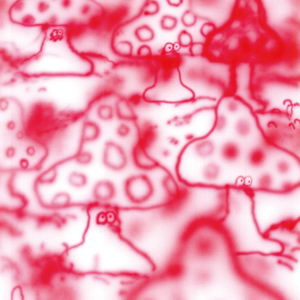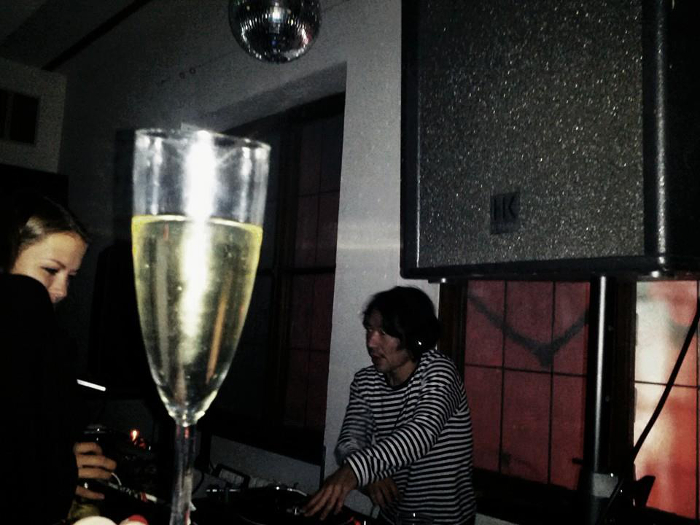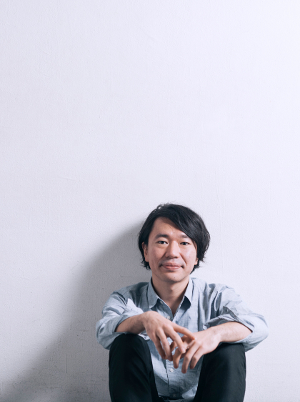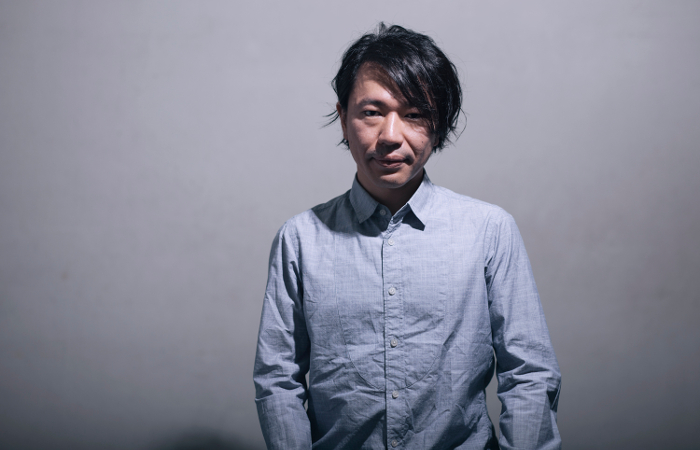Gonno: Beautiful Complications

Gonno was once typecast as a minimal techno producer with a reputation for being a fine club DJ. Yet in recent times, his music has become increasingly deep, melodious, picturesque and far harder to pigeonhole. Matt Anniss spoke to the Japanese artist in order to discover the reasoning behind this seismic shift.
Sunao Gonno is in a reflective mood. “Over the last two decades, I have learned that music is the true language,” he explains via email from his Tokyo home. “Music, especially instrumental music, can be like a language without any lies. That’s the greatest thing I have discovered.” Those who have followed the Japanese artist’s progress in recent years on increasingly impressive releases for International Feel, Beats In Space and, most recently, Endless Flight, will attest to the growing sensitivity and reflective nature of his music. His new album, Remember This Life Is Beautiful, is arguably his most poignant and picturesque work to date.
His productions haven’t always been this pretty, though. Gonno spent the early part of his recording career creating purely functional club music. Influenced by different forms of techno – particularly minimal – and acid house, these early releases were almost unashamedly impersonal. Full of dark textures and relentless rhythms, they expressed little but offered impressive ammunition for his DJ sets.
Those productions began to emerge in 2005, some nine years after he first fell head over heels in love with DJing and club culture as an enthusiastic 18 year-old. “20 years ago, I was just a boy who loved music,” he reflects. “I never imagined that people would be listening to my music two decades later. I’m always amazed at how many people are moved by my music. I feel lucky.”
 While affable, enthusiastic and largely cheery over the course of our conversation, it’s not hard to spot an element of melancholy in some of Gonno’s proclamations. Anyone in the late thirties who have devoted their lives to club culture will surely empathise; taking stock is a natural occurrence as the years progress. Even so, there seems more to it than simple nostalgia for times gone by. Listen to Remember This Life Is Beautiful – itself a title laden with meaning – and you, too, will pick up on this. For all the album’s shimmering, delay-laden guitars, glistening melodies and evocative chords, there seems to be an underlying sadness bubbling beneath the surface.
While affable, enthusiastic and largely cheery over the course of our conversation, it’s not hard to spot an element of melancholy in some of Gonno’s proclamations. Anyone in the late thirties who have devoted their lives to club culture will surely empathise; taking stock is a natural occurrence as the years progress. Even so, there seems more to it than simple nostalgia for times gone by. Listen to Remember This Life Is Beautiful – itself a title laden with meaning – and you, too, will pick up on this. For all the album’s shimmering, delay-laden guitars, glistening melodies and evocative chords, there seems to be an underlying sadness bubbling beneath the surface.
It’s all in sharp contrast to the unbridled enthusiasm that first drew Sunao Gonno to the bosom of dance music in 1996. Like many musicians before him, he was first enchanted by pop music as a child, something that didn’t please his parents. “I remember when I recognized the existence of synthesizers and drum machines in the music of Tatsuro Yamashita and Ryuichi Sakamoto,” he says. “I begged my parents to buy them, but they were very expensive and they were not impressed that I liked music.”
Undeterred, he bought a cheap electric guitar and joined an indie band. Then, as his teenage years progressed, he began experimenting with making his own electronic music. “I started making music by using an old Macintosh running the Opcode Vision sequencer, and cheap Roland synthesizers, all of which I borrowed from my older brother. The tracks I made were totally rubbish and I didn’t record any of them to tape.”
As a high school student, he discovered club culture for the first time. Following a series of “superb experiences” at legendary Tokyo nightclubs Gold and Yellow, he decided he wanted to become a DJ.
“I quit playing in the band and went straight out and bought two turntables and a DJ mixer,” he says. “I quit making music for a long time, instead digging for vinyl and practicing mixing.” He became fascinated with club culture, partly due to bands such as Primal Scream, The Stone Roses and My Bloody Valentine who incorporated elements of dance music in their mid ’90s output. “I’d also heard US house music, like Crystal Waters and C+C Music Factory, on Japanese TV. Retrospectively, it may have been a natural thing that I made a commitment to dance music and club culture.”

His rise through the ranks in Japanese DJ culture wasn’t stellar, though by the time he was 20, Gonno was a regular behind the decks at his beloved Yellow in Tokyo. While focused firmly on house and techno, he always looked up to DJs who mixed things up; a trait that he has tried to embrace throughout his career.
“Then I was especially digging labels like Strictly Rhythm, Eightball and Nervous, as well as German techno imprints such as Force Inc,” he remembers. “I always enjoyed the DJs who played many types of music, and clubs where I could listen to various styles, too. I wanted to become a DJ who was versatile.”
This love for versatility can be seen in the DJs he cites as inspirational – Harvey and Francois Kevorkian amongst them – and at the parties he threw at the 150-capacity Loop club in Aoyama.
Even so, when he came to recording and releasing his debut album, My Existence, in 2005 and the string of subsequent singles for Perc Trax, Beyond and Merkur Schallplatten, it was the techno and club-friendly house side of his repertoire that came to the fore.
“Back then I was listening to a lot of great electronic music, from labels and artists such as Four Tet, Border Community, Playhouse, Background, Akufen, and Boards of Canada,” he says. “I really enjoyed and played all of these, and was keen to present this diversity that I’d experienced on dancefloors on my album. That’s also why it was presented as a mixed CD. Listening back now, I think my compositional technique was poor, but I’m still a bit proud of it.”
Over the subsequent years, Gonno gained a reputation alongside his friend and frequent studio collaborator Salmon, the now sadly-departed founder of W.C Recordings, as a purveyor of atmospheric minimal techno and scorching acid tracks. All the while, though, he was experimenting behind closed doors, recording tracks, from hazy ambience to disco-flecked goodness, that more closely reflected his widening tastes and growing confidence as a producer.
The first evidence of this shifting emphasis can be heard on 2010’s “Short Days With The Orchid” on Merkur Schallplatten, a ten-minute chunk of minimal-influenced deep house smothered in twinkling music box melodies and evocative pianos. For someone whose releases had focused more on form and function, it was a gloriously surprising departure.
 “I’d been DJing for many years, so I understand what works for the dancefloor,” he says. “For a long time, I didn’t understand the beauty of melodies and harmonies. I love beautiful, melodious, harmonious music, so I had to work out how to write and produce these, in order for my music to work on people’s minds. Around this time I think I started to get it right.”
“I’d been DJing for many years, so I understand what works for the dancefloor,” he says. “For a long time, I didn’t understand the beauty of melodies and harmonies. I love beautiful, melodious, harmonious music, so I had to work out how to write and produce these, in order for my music to work on people’s minds. Around this time I think I started to get it right.”
Gonno certainly got it right on 2011’s epic Acdise #2 EP on International Feel. The title track – all spiraling electronics, attractive analogue synthesizer lines and dreamy chords – was little less than 11 minutes of Balearic house gold. Impressively, the EP also included a beautiful piece of fluid, guitar-laden ambience titled “Turn To Light”. There was now no doubting his versatility, or his ability to write wonderfully atmospheric music.
“I had been making ambient tracks for a long time, but nobody was interested because house and techno labels were only keen on dancefloor friendly stuff,” he complains. “Thankfully, International Feel and later, Beats In Space, were different from the others. Both of those labels did me a favour. Since then, my sight has been wider.”
This point has certainly been proved in his music since, which has generally been much more vivid, colourful and emotion-rich. A decade into his production career, Sunao Gonno is now capable of stirring the listener’s emotions, and more significantly, utilizing composition to express his own.
This brings us neatly back to new album Remember This Life Is Beautiful, which swings languidly between kaleidoscopic moments of rush-inducing clarity and tracks that almost collapse under the weight of rueful melancholy. It’s an emotional rollercoaster very much born out of painful experiences.
“In 2010, a friend who’s also a DJ was in an accident and had to stop his career,” he reveals. “This made me realise, ‘we never know what will happen in life, and I need to be honest with myself all the time’. It was true outside of music especially.” Gonno adds there have been many other events that have affected him deeply, such as Salmon’s death and the 2011 nuclear disaster Fukushima Daiichi, “but these are very personal, so I’d rather not talk more about them. Let’s just say that I realized that I had to do what I want to do, because life doesn’t last forever.”
This live-life-to-the-full attitude, and all of the joy that brings, is as evident on Remember This Life Is Beautiful as the heart-aching moments that helped inspire it. From the Secret Circuit style sun-kissed beauty of opener “Hippies”, and dreamy deep house of “Confusion”, to the surging happiness of loose, melodious closer “Green Days”, Gonno simply lets go – with magical results.
“I always try to write music which stirs someone’s emotions, even if it’s kind of four on the floor or not,” he enthuses. “I didn’t want to make it just for the dancefloor; it was important to sound and feel varied. I put a lot of thought into sequencing it, too.” To qualify this, he refers to the album opener “Hippies”, “this rmaybe not for the dancefloor, and it felt necessary to put it first to prove that the album is the way it is.”

Those who listen intently will discover a range of instruments and sounds that have been creeping into Gonno’s productions over the last few years, but have perhaps not been picked up on by reviewers. There are live drums, effects-laden guitars, and a wide variety of synthesizer sounds. This combination gives it a dense but musically rich feel that’s in sharp contrast to the music with which he made his name.
“I used many of these elements in the past, but I didn’t have enough courage to put out those tracks,” he admits. “I always thought I needed to pursue the best quality of tones for the dancefloor, but I got tired with this.” Gonno feels too much music is uniform in the sounds used, and as a result the individuality is sacrificed. “For me this is quite boring, and not my intended purpose. So, I used the sounds you’ll find a lot on the album – handclaps, guitar, percussion hits made from tapping an ashtray or hitting a microphone to make a kick. I recorded these myself, in order to have unique sounds.”
During the recording process, Gonno also spent much time with his record collection, listening to a wide range of music for inspiration. “This has always been the case, but recently I’ve really been enjoying James Holden’s The Inheritor and Vladislav Delay’s two albums for Raster-Noton”, which he describes as “masterpieces that have expanded the possibilities of electronic music.” Surprisingly, classical music played a role during the album’s recording, “Gershwin, Satie, Dvorak, and post-classical such as Terry Riley, as well as the African funk of Tony Allen. And, of course, there’s always the dancefloor records I buy for DJing. I can’t avoid those.”
Not all listeners will spot these influences – many are buried in the mix, or simply provided context – but Gonno’s admission at least gives insight into his creative process. It is one that provided superb results, giving Remember This Life Is Beautiful the feel of a genuine labour of love.
“Of course!” he proclaims enthusiastically. “I absolutely made the album that I envisioned. Some people have said it’s an ambient album, but I don’t think so. I only wanted to prove that a DJ can make a varied album, filled with music that’s as evocative as those created by bands or composers.”
Interview by Matt Anniss
Endless Flight on Juno